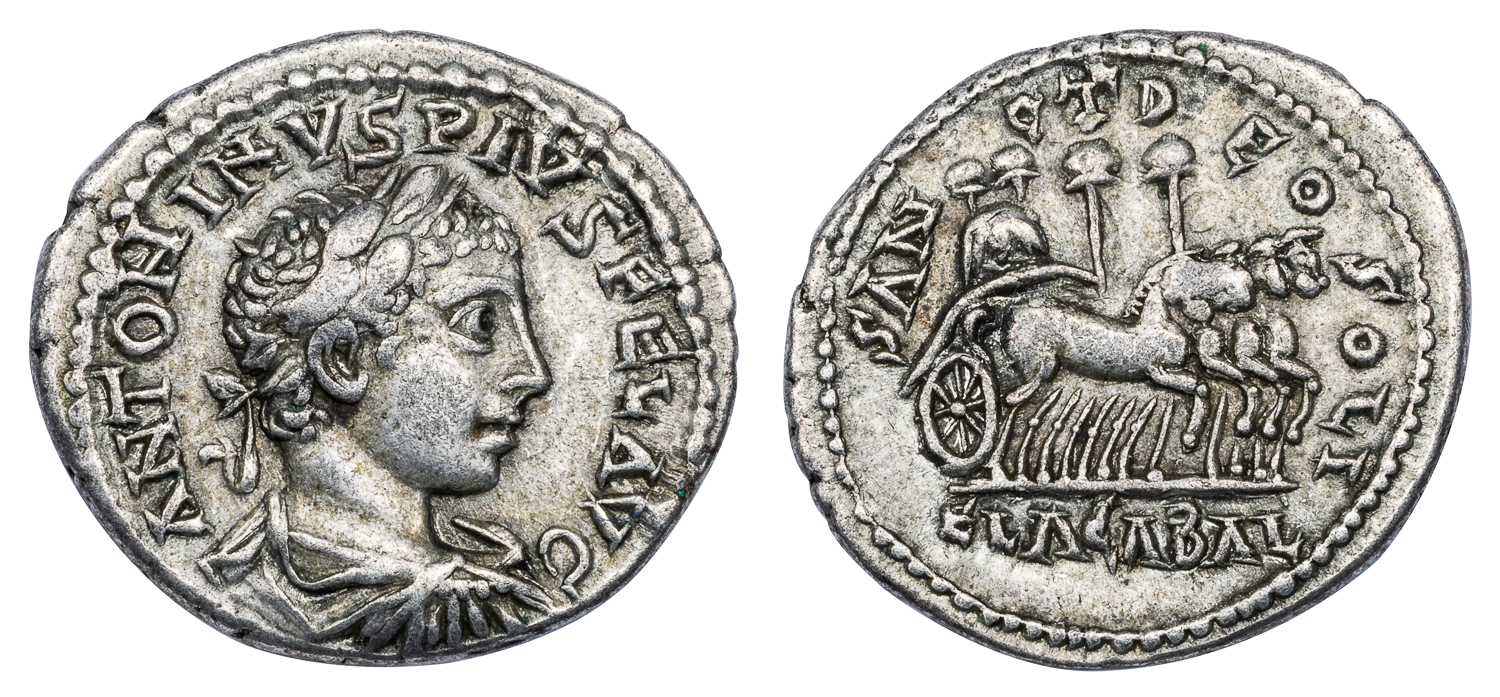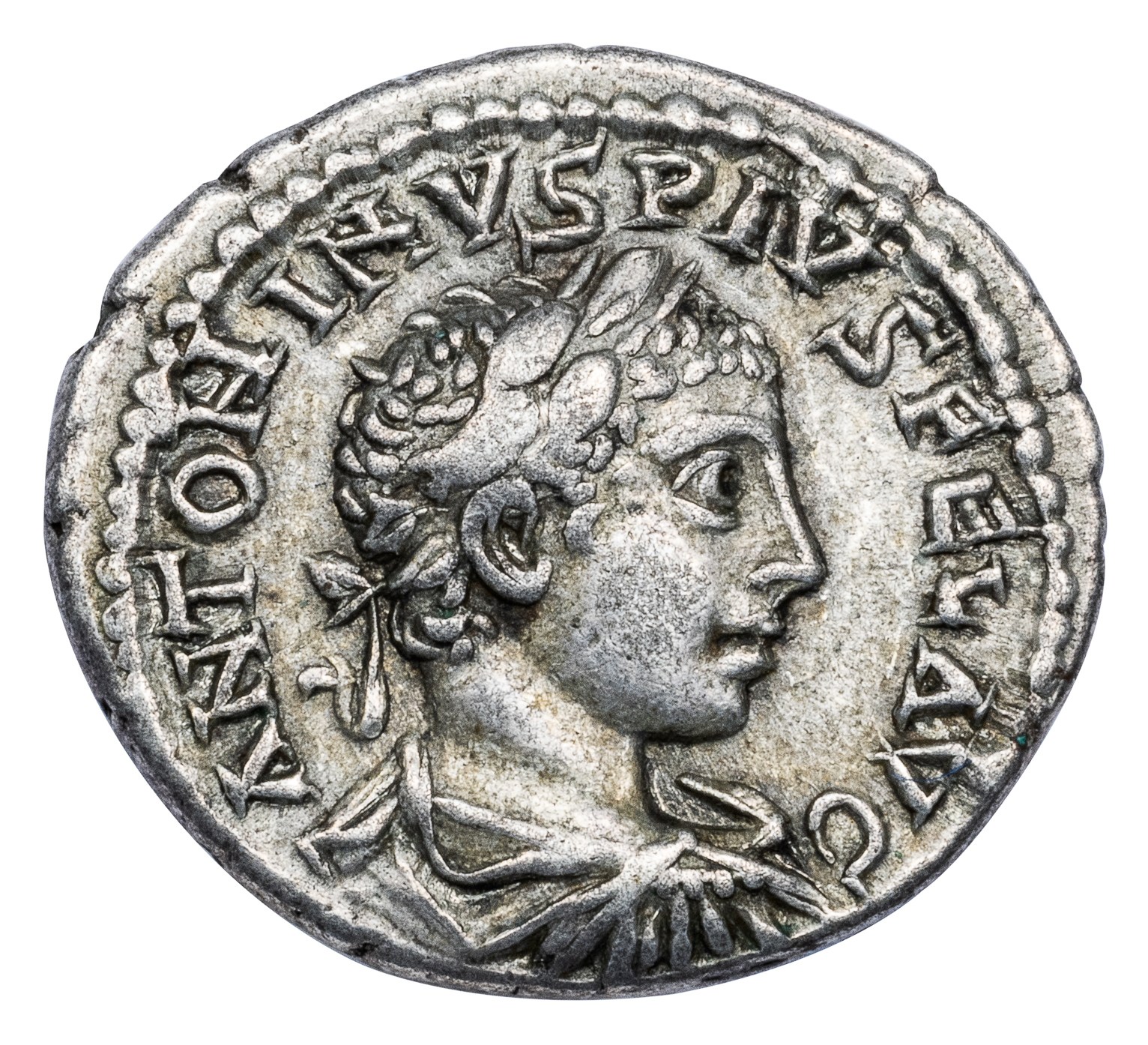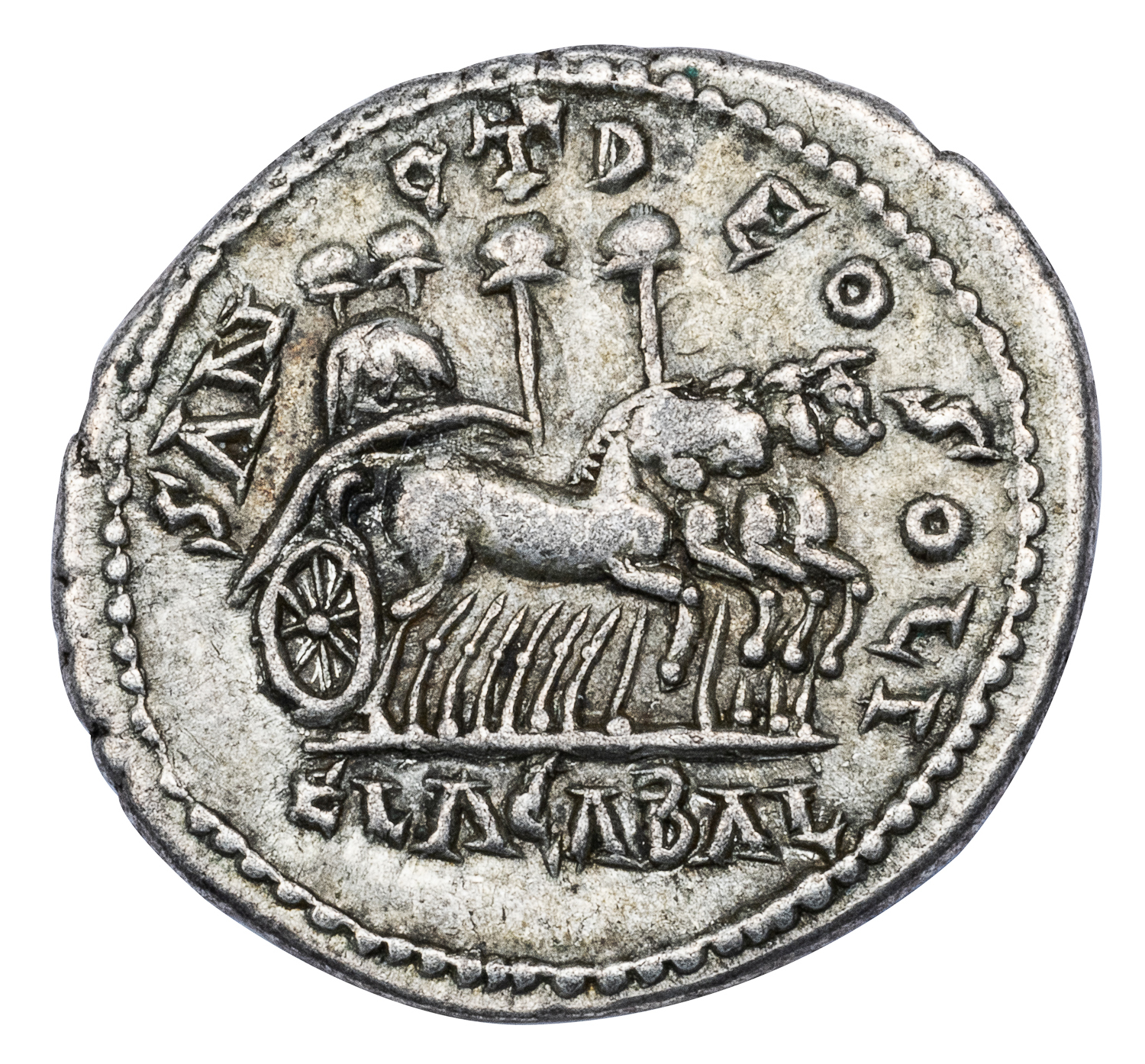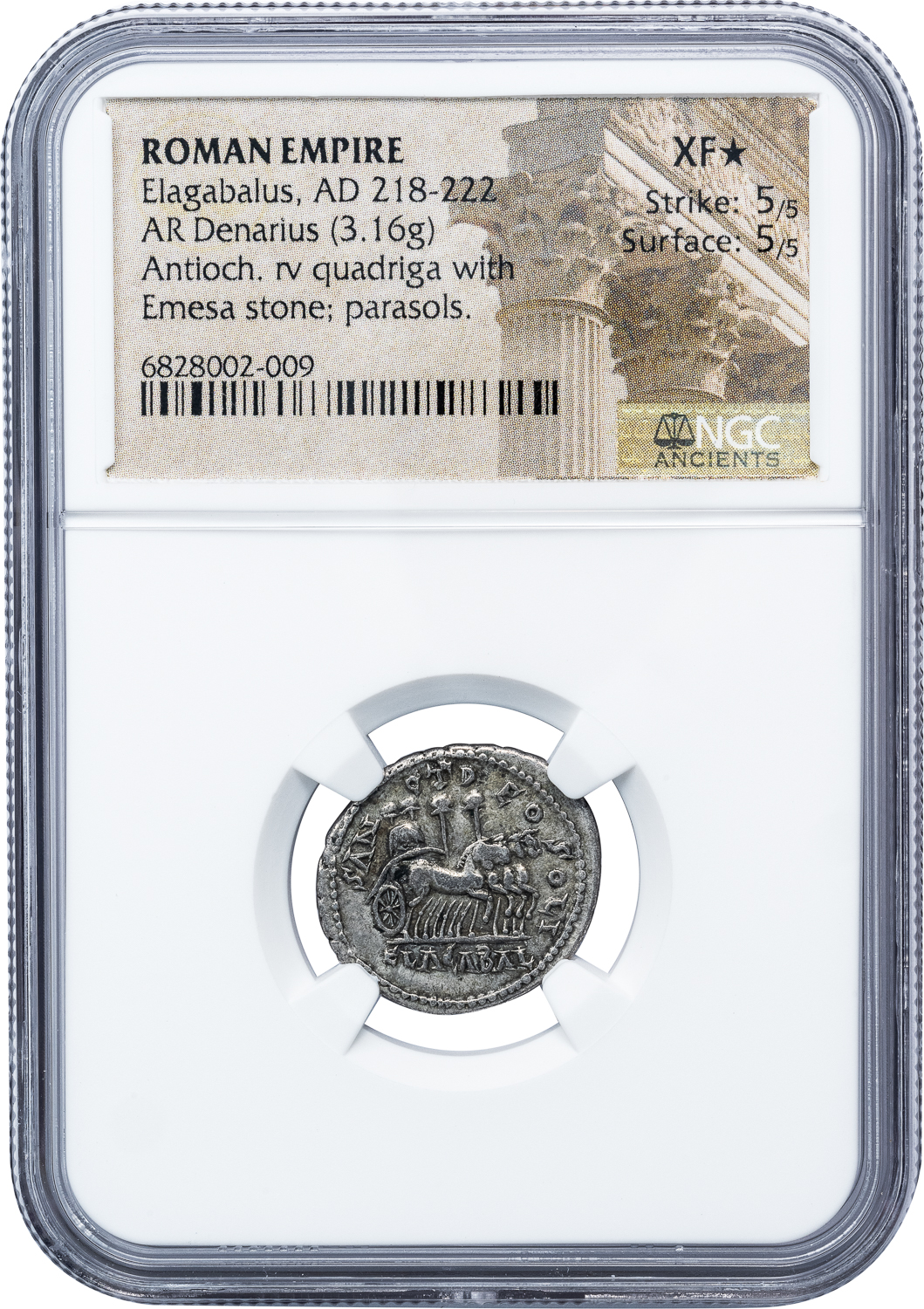ELAGABALUS SILVER DENARIUS – FAMOUS TYPE SHOWING THE STONE OF EMESA BLACK METEORITE – XF STAR 5/5 5/5 NGC GRADED ROMAN IMPERIAL COIN (Inv. 19008)
$4,850.00
FPL VI, 78 (19008). ROMAN EMPIRE. ELAGABALUS, AD 218-222.
Silver denarius, 3.16 g, 19 mm. Issue of an uncertain mint in the east, perhaps Antioch, AD 218-219.
Obv. ANTONINVS PIVS FEL AVG, draped, cuirassed and laureate bust of Elagabalus right. Rev. SANCT DEO SOLI, quadriga moving right, carrying the conical stone of Emesa decorated with an eagle and surrounded by parasols, ELAGABAL in exergue.
RIC IV 195; Thirion 360; BMCRE 284-5.
Ex Gorny & Mosch 199, 10/10/2011, lot 717.
NGC graded as CHOICE XF STAR, Strike 5/5 Surface 5/5, a superb specimen of this fascinating Roman type. This coin depicts the ritual transport of the “stone of Emesa,” likely a black meteorite, associated with the cult of the god El-Gabal (Elagabalus). Varius Avitus Bassianus, the emperor commonly known today by his religious name of Elagabalus, was a priest of the Emesan sun god and had the holy relic brought to Rome once he became emperor. Special temples were built to accommodate the stone and the ancient author Herodian (V.6.7) describes the yearly transfer of the stone from its new Palatine temple to one nearby the city where it resided in the summer: “A six-horse chariot bore the sun god, the horses huge and flawlessly white, with expensive gold fittings and rich ornaments. No one held the reins, and no one rode in the chariot; the vehicle was escorted as if the sun god himself were the charioteer. Heliogabalus ran backward in front of the chariot, facing the god and holding the horses’ reins. He made the whole journey in this reverse fashion, looking up into the face of his god.” After Elagabalus’ fall from power and assassination, the stone was returned to its home city of Emesa, where it is shown on coins.
Product Categories
Click on the (+) symbol to view subcategories
- FIXED PRICE LIST VII
- SHOWCASE V COINS
- SHOWCASE VI COINS
- HIGHLIGHTS
- ANCIENT COINS
- IRIDESCENT TONING
- PLATE COINS
- PROVENANCED ANCIENTS
- PUBLISHED ANCIENTS
- FAMOUS COLLECTIONS
- NGC GRADED ANCIENTS
- UNENCAPSULATED ANCIENTS
- ANCIENT GOLD COINS
- ANCIENT ELECTRUM COINS
- CELTIC COINS
- ETRUSCAN COINS
- GREEK COINS
- EARLY ELECTRUM COINS
- COINS OF MAGNA GRAECIA
- COINS OF SICILY
- COINS OF ATHENS
- COINS OF AEGINA
- COINS OF THEBES
- COINS OF ALEXANDER
- COINS OF MACEDONIAN KINGS
- COINS OF LYSIMACHUS
- COINS OF THE BLACK SEA
- COINS OF CRETE
- COINS OF ASIA MINOR
- PTOLEMAIC COINS
- COINS OF PHOENICIA
- CYPRUS
- SELEUCID COINS
- BACTRIAN COINS
- JEWISH COINS
- BIBLICAL COINS
- ARMENIAN COINS
- PERSIAN COINS
- COIN OF MAURETANIA
- COINS OF ANCIENT INDIA
- ROMAN REPUBLICAN COINS
- ROMAN IMPERATORIAL COINS
- ROMAN IMPERIAL COINS
- ROMAN PROVINCIAL COINS
- BYZANTINE COINS
- ANCIENT ERROR COINS
- ANCIENT IMITATIONS
- ANCIENT FORGERIES
- COUNTERMARKED COINS
- MYTHOLOGICAL STORIES
- OVERSTRIKES
- ARCHITECTURE & CITY VIEWS
- WORLD COINS




